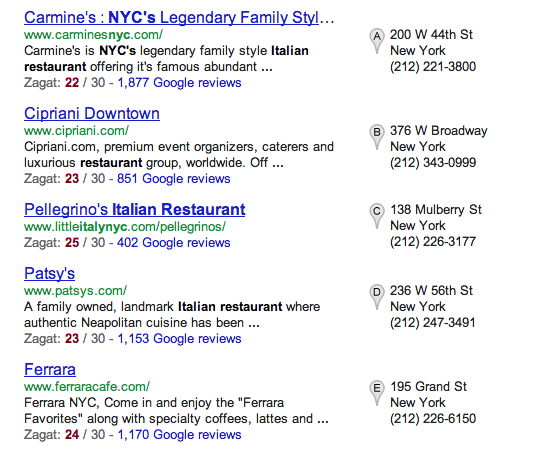Restaurant Marketing Plan
Eighty eight percent of independent restaurateurs don’t know how to market a restaurant effectively! You can see why this statement can be true, when you understand what is defined as marketing. Marketing is telling people about your place of business, getting them to try new and interesting foods and beverages and having them come back again bringing their friends. Having a restaurant marketing plan is crucial to the success of any restaurant.
A restaurant has basically only four things to sell. First is the food. Whether the menu is fast food hamburgers or gourmet pate, a restaurant is basically in the business of selling food.
Second, a restaurant sells service. Service may be fast, with self service, or it may be fine dining with elaborate table side service provided by a squad of talented and trained captains, waiters, and bus boys.
Third, is the selling the ambiance of the restaurant. This is the comfort, appearance, sights and sounds, and all the good and interesting things that keep a customers attention and make the dining experience pleasant.
Fourth is the sale of hospitality; which is the atmosphere produced by the other three and confirmed by the attention and friendliness of all the people who are in contact with the customer.
How do you tell people about your great food, prompt service, delightful ambiance and sincere hospitality? Advertising is the means that almost all businesses use to attract the attention of prospective buyers. We are all familiar with the common methods of advertising such as newspapers, radio, magazines, hand bills, TV, direct mail, sign boards, window signs, and banners. However, the future of marketing and advertising in the restaurant industry is in Internet and mobile devices.
Everyone in business today understands at least something about marketing, but less understood is the technique of getting the customer to try the new and interesting foods and beverages. This is called merchandising and it is a tool to get the customer who is in the restaurant, to buy. You may not have thought of these as examples of merchandising, but they are. These include menus, table tents, waitress badges, menu clip-ons, place mats, posters, suggestive selling by employees, special menus, table-toppers and menu boards.
Some operators confuse merchandising with promotions. However, if we define promotions as special events developed to call attention to a special product or service or both you can understand that a promotion may use merchandising and advertising or both to achieve its purpose.
Publicity and P.R. (Public Relations) should not be confused with advertising, merchandising, or promotions. Publicity is really news, either good or bad, concerning your business establishment.
“Publicity is free” if anything in this world can be considered free. Publicity is welcomed if it is good news about your business. It is unwelcomed if it is bad news. Some restaurateurs spend a lot of their time trying to create good P.R. for their restaurant. They do civic work, participate in community activities and make their restaurant food or service available for special needs of the locality and the people that they serve in that area. However, no matter the good deeds, if a customer customer visits an establishment that has poor service or a less than desirable atmosphere that customer may take to the newest form of publicity to tell the world about it, the Internet and consumer review sites. These types of comments about an establishment can damage the overall reputation and make additional advertising and promotional campaigns futile in their attempts to get more business in the door.
Marketing is an on-going activity akin to the life of a human being. Your restaurant, bar or catering facility will have a life that can be defined by four states. The first is called the youthful stage which is the beginning of your business when there is a lot of interest by the public in what you are doing, how you are doing it, and where you are headed. Whether you create a food or facility in an empty corn field or buy out an existing store front, the community that you serve is usually aware that something new is happening. Their curiosity plus some prompting through advertising or promotions will bring them initially to your front door.
Usually during this youthful stage you are in active control of your restaurant, like a good parent watching everything that is happening, exerting considerable input on the activities of your employees so that your food and your service meet the goals that you established for your business before you opened.
Be wary of getting over fatigued during this time. Your employees will be inexperienced in the ways of your restaurant and if you can’t supervise them effectively, their efficiency can decline resulting in poor performance toward your customers and subsequently poor reviews for your restaurant.
As the owner, watch out and try to avoid over working yourself which can result in a poor image being create in early on customers. These customers could cause the word to spread that your food and service are not what they should be. By anticipating this situation and counteracting the causes, you can avoid a poor image of the food facility being created in the public eye that can continue to haunt you in the years to follow.
The most important steps that can be taken are:
1. Make the initial menu easy to prepare
2. Let it have enough variety and uniqueness to satisfy the target market
3. Allow the staff to get used to the system gradually.
4. Don’t have an immediate ‘Grand Opening’.
5. If possible, begin with a limited number of hours open for business.
6. Hire some outside ‘experts’ to help get through the initial opening shock.
Keep in touch for the next article that will help you with the elements of a complete restaurant marketing strategy. This will help you make and effect restaurant marketing plan to help grow your business.
 Restaurant Marketing Plan
Restaurant Marketing Plan

You must be logged in to post a comment.